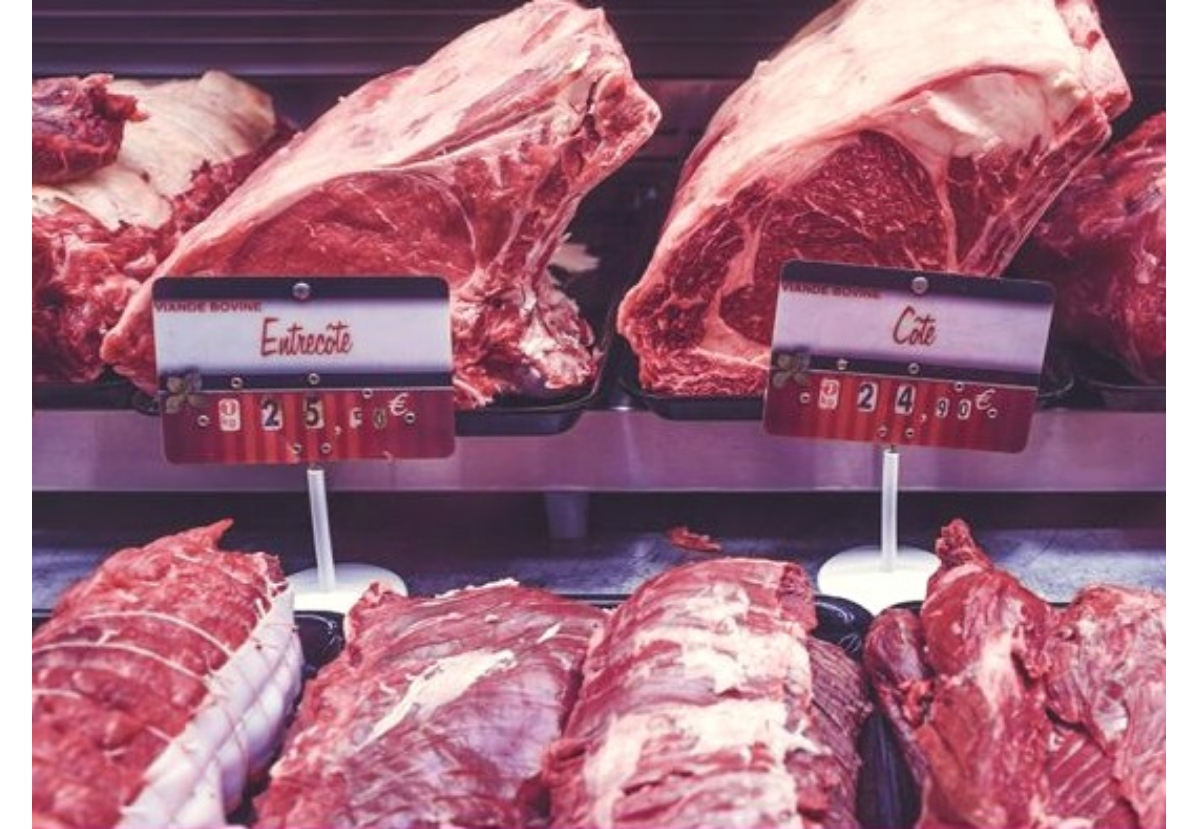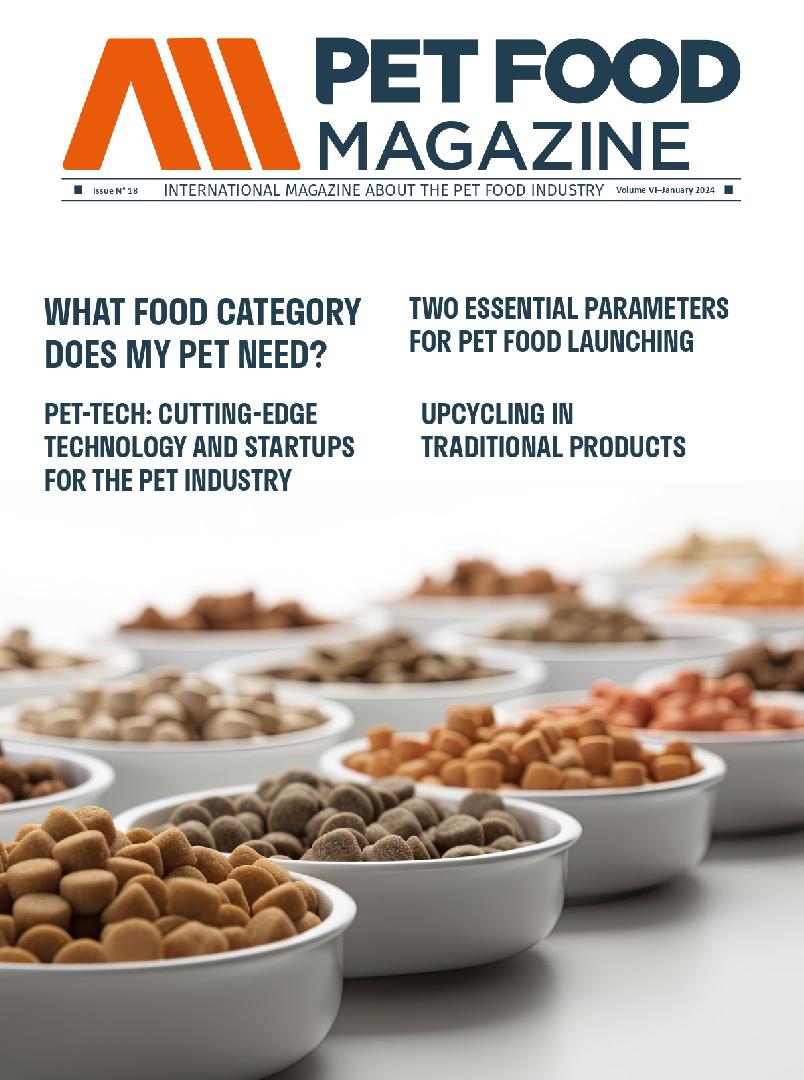The world and trends are updated with increasing speed, and in the pet food industry we see new ways of feeding and caring for pets.
Currently, the trend is increasing to feed domestic dogs and cats in developed countries with raw meat with commercial preparations or homemade recipes. In this article we`ll talk about the B.A.R.F. diet: what it's all about, its benefits, characteristics and risks.
What is the B.A.R.F. diet?
The B.A.R.F. comes from the term Biologically Appropriate Raw Food or biologically appropriate raw foods, and refers to a type of diet based on non-heat-treated animal products, that is, raw.
Founded by veterinarian and nutritionist Dr. Ian Billinghurst, this type of diet maintains that, due to the natural evolution of pets (and genetic modifications), a raw diet composed of fresh meat and vegetables is the most appropriate today.
Raw meat-based diets include raw ingredients from livestock or wild animals, and include raw materials that can be prepared at home or purchased ready-made, such as fresh, frozen or freeze-dried versions.
What are the main characteristics of a B.A.R.F. diet?
A raw diet should be rich in protein, moderate in fat, and low in carbohydrates. Some raw materials that make up this diet are:
• The meat (muscles and organs)
• Fleshy bones
•Vegetables and fruits
Which are your main benefits?
The truth is that, to this day, several benefits of this type of diet are known, including:
• Slender and fibrous body structure
• Better coat
• Cleaner teeth and fresher breath
• More energy
Another important and considerable benefit of the B.A.R.F. is its positive environmental impact. Raw food reduces the ecological footprint, since it considers in the diet parts of animals that are not consumed by humans, such as organ meats, which reduces waste in the human food production chain.
Does the B.A.R.F. does it pose any risk to dogs?
One of the risks of incorporating raw food into a pet's diet is that the owners select and prepare the food in a homemade way. This can result in providing unsuitable food or producing a nutritional deficit in the animal. The products that are consumed in a BARF diet, if they are wrongly treated, can cause infectious diseases, and that is why any manufacturer that decides to venture into this type of food to offer it to the market must take into account the microbiological safety of each one of the components and stages of production (cold chain in all stages of production and storage, for example). Another emerging risk is the introduction of antimicrobial resistant bacteria.
• Raw Pet Foods commonly exceed hygiene thresholds for Enterobacteriaceae counts. These bacteria often exhibit resistance to critically important antibiotics, such as extended-spectrum cephalosporins, for example, and pets fed a B.A.R.F. they may pose an increased risk of spreading such bacteria. Other infectious organisms that can cause problems are Listeria, Toxigenic Shiga Escherichia coli (STEC), some parasites such as Toxoplasma gondii and exotic agents such as the zoonotic cattle pathogen Brucella suis, recently found in raw meat in the European Union and the United Kingdom imported from Argentina.
• Some 2013 research on raw diets (both homemade and commercial) exposed some nutritional problems such as an imbalance of calcium, phosphorus and the lack of some specific vitamins.
• Certain bioavailability problems are also considered as an additional risk of deficiency, which was demostrated in a study in which a raw whole rabbit-based diet was used that contained the adequate amount of taurine in the analysis prior to being consumed, Even so, the young cats that consumed it presented fatal cardiomyopathies due to taurine deficiency months after implementing this type of feeding.
What evidence and scientific evidence is there so far?
On the one hand, there is evidence to affirm that raw feeding improves the altered gut microbiome and the quality of stool.
The wolf has been used as a model by proponents of raw food, relying on its limited ability to digest carbohydrates, which form a substantial part of conventional dog food. However, the domestic dog is genetically altered compared to its wild ancestors, and has a greater ability to digest starch.
Other differences between domestic and wild canids include balance between energy and other nutrient needs, in addition to longevity.
On the other hand, current experience in feeding canids in zoos, including wolves, supports the benefit of using conventionally processed dog food in a majority percentage of the diet.
Even so, and despite the various voices that position themselves against the B.A.R.F. diet, some studies were carried out with the aim of providing verifiable evidence for some claims made based on raw food:
• In the results of a study conducted in 2017, it can be seen that fecal bacterial diversity appeared to be higher among six dogs fed raw products compared to five fed that consumed balanced food.
• A small study carried out with boxer dogs that compared the effects of feeding us with raw beef together with a supplement with a balanced food diet showed, through an analysis of metagenomic information, that smaller and firmer stools and some changes were found in the fecal bacterial community.
• A group of baby cats fed a raw diet (rabbit meat) also had a better quality of feces; however, the kittens that were part of a similar group but that consumed balanced food as their main meal grew continuously and proportionally, as did those that consumed the B.A.R.F.
In conclusion
The implementation of the B.A.R.F. diet is a growing phenomenon among pet owners in developed countries, the same ones who, in previous decades, received the convenience presented to them by the Pet Food and balanced feed industry.
The polarization on the merits of raw food and the benefits or emotional burdens that it entails is in force and will remain that way for a long time until it is adopted by a larger number of people or is repudiated and left aside.
For their part, the studies and analyzes still seem insufficient in terms of defining a specific position on the impact of this type of diet, although it is true that various adverse effects have been found. The data on the nutritional, medical, and public health risks of raw food are fragmentary, but are increasingly forming a compelling body of scientific evidence.
In any case, we consider that, to implement this type of food in the product line, it is essential not only to ensure that we strictly comply with the appropriate procedures but also inform through the packaging, of said products, how to handle them correctly and what is can or should (and should not) do with them.
Have you ever heard of this diet? Do you think it will prevail in the market?
Tell us, your opinion is very important for us
Source: All Pet Food
You could be interested: All about a súper premium fiber system
About author
María Candelaria CarbajoTranslator and editor. I collaborate with businesses and purposeful projects that want to improve their written communication, transmit their differential values, and connect with their audience. I enjoy teamwork and joining forces, experiences, and knowledge to bring to the world all the potential of businesses that seek to make an impact with their services, products, or experiences.














































